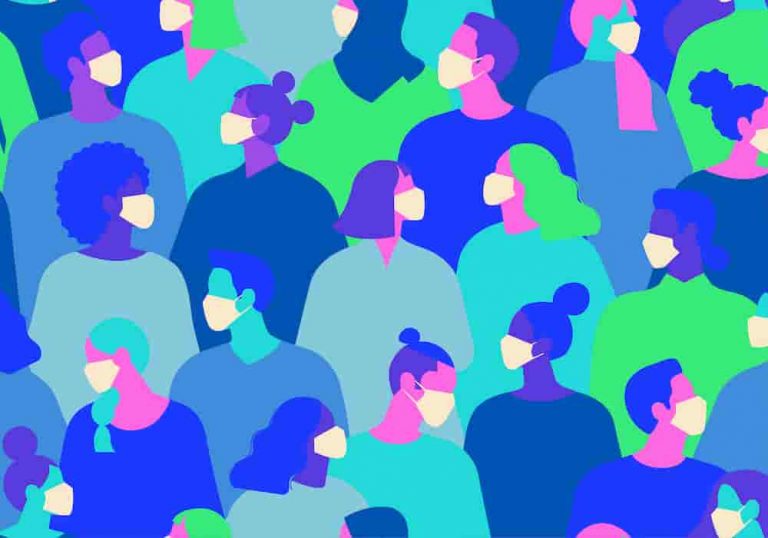Quarantine vs. Isolation: Is There A Difference?

by John Kelly, Senior Research Editor at Dictionary.com
During public health emergencies, like the outbreak of the coronavirus, it’s essential to stay informed. But a lot of that information, when it’s not misleading, can be overwhelming and confusing—down to the very words we use to talk about a crisis.
What’s COVID-19? Is that the same thing as coronavirus? Is the disease an epidemic or pandemic? And what’s the difference between quarantine and isolation?
In everyday conversations, people sometimes use quarantine and isolation interchangeably to refer to separating people in various ways due to the spread of a disease. But for doctors, public health officials, and other professionals, there is an important distinction between quarantine and isolation.
More From Dictionary.com: Is The Coronavirus A Plague?
Let’s break these words down.
What does quarantine mean?
In general, a quarantine is “a strict isolation imposed to prevent the spread of disease.” We know what you might be thinking: so, a quarantine is … just an isolation? Not exactly.
As the Centers for Disease Control and Prevention (CDC) explains, the practice of a quarantine specifically involves:
… the separation of a person or group of people reasonably believed to have been exposed to a communicable disease but not yet symptomatic, from others who have not been so exposed, to prevent the possible spread of the communicable disease.
The takeaway: People are put in quarantine when they are not currently sick, but have been or may have been exposed to a communicable disease. This can help stop the spread of the disease.
Voluntary quarantine (when someone isn’t ordered to go into quarantine but chooses to do so just out of caution) is often called self-quarantine.
Entering English in the early 1600s, this “isolation” sense of quarantine comes from the Italian quarantina, a period of forty days, derived from quaranta, the Italian for “forty.” (The Italian quaranta, if you’re curious, comes from the Latin quadrāgintā, also meaning “forty.”)
What’s so special about 40? Historically, a quarantine referred to a period—originally of 40 days—imposed upon ships when suspected of carrying an infectious or contagious disease. This practice was done in Venice in the 1300s in an effort to stave off the plague.
What does isolation mean?
In general, isolation is when someone or something is set apart or separated from other persons or things. In medical contexts, isolation specifically means “the complete separation from others of a person suffering from contagious or infectious disease.”
Again, according to the CDC, the practice of isolation entails:
… the separation of a person or group of people known or reasonably believed to be infected with a communicable disease and potentially infectious from those who are not infected to prevent spread of the communicable disease. Isolation for public health purposes may be voluntary or compelled by federal, state, or local public health order.
The takeaway: isolation happens when a person is infected with a communicable disease, and is separated from people who are healthy. This also helps stop the spread of the disease.
Voluntary isolation is sometimes called self-isolation, although everyday people using the latter term may not mean they are actually infected.
First recorded around 1825–35, isolation ultimately comes from the same root as insulation: the Latin insulātus, “made into an island,” based on insula, “island.” Isolated is recorded around 1755–65.
What is social distancing?
The COVID-19 outbreak has introduced many people to the term social distancing for the first time. In public health contexts, social distancing generally refers to various measures that reduce close contact (increase distance) between large groups of people (hence social).
According to the CDC, social distancing involves “remaining out of congregate settings, avoiding mass gatherings, and maintaining distance (approximately 6 feet or 2 meters) from others when possible.” And congregate settings include “crowded public places where close contact with others may occur, such as shopping centers, movie theaters, stadiums.”
Social distancing measures often entail canceling big gatherings (such as conferences, classes, and sporting events), restricting mass transit and travel, and working from home.
More From Dictionary.com: Canceled vs. Cancelled: Which Is Spelled Correctly?
It’s not to be confused with the concept of social distance in sociology, or “the extent to which individuals or groups are removed from or excluded from participating in one another’s lives.”
As part of their own efforts to social-distance (as many are verbifying social distancing), people may say they are “isolating” or “self-isolating.” Keep in mind that these more casual uses of isolation don’t necessarily mean they are infected, as when the CDC uses isolation! If you’re confused, ask—and wash your hands.
What is the difference between social distancing and physical distancing?
Some health professionals are increasingly encouraging the use of the term physical distancing as a clearer alternative to social distancing. Physical distancing underscores the importance of keeping physical distance between people to help stop the spread of the coronavirus. The term additionally makes clear that people should still spend time with friends and family using digital technology and social media when they are physically separated.
For health, safety, and medical emergencies or updates on the novel coronavirus pandemic, please visit the CDC (Centers for Disease Control and Prevention) and WHO (World Health Organization).